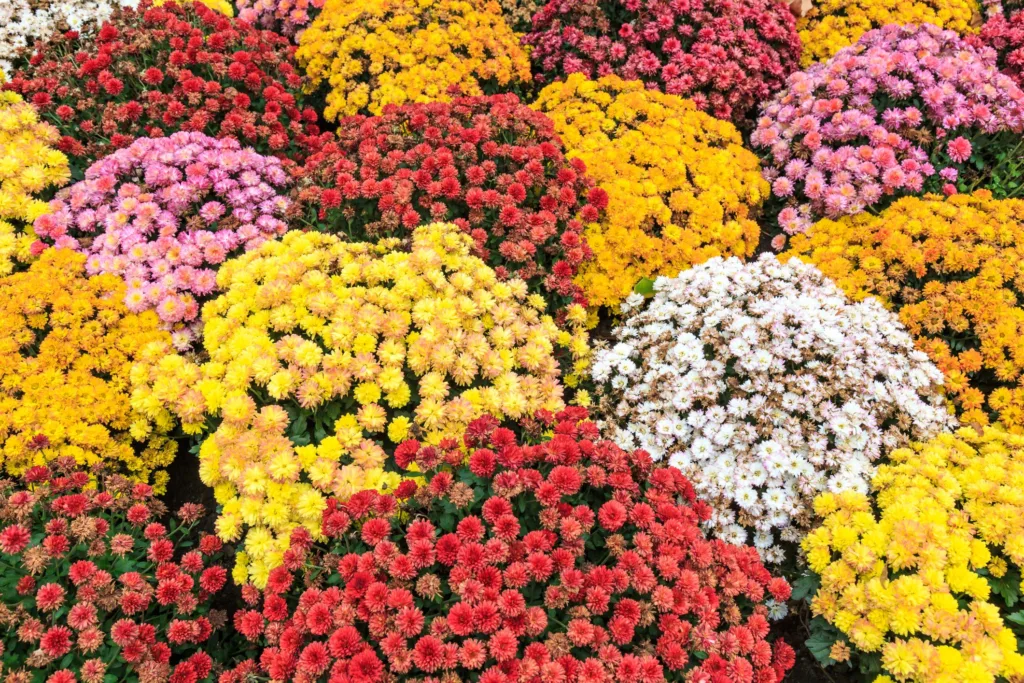Mounding annuals are a great way to add color and texture to your garden or outdoor space. These plants are characterized by their rounded appearance, with a wider shape than height. They are perfect for filling in gaps in your garden or adding interest to a container.
One of the great things about mounding annuals is that they come in a variety of colors and textures. Some popular choices include petunias, marigolds, and zinnias. These plants are easy to care for and require minimal maintenance.
When selecting mounding annuals for your garden or container, it is important to consider the amount of sunlight and water they will need. Most mounding annuals prefer full sun, but some can tolerate partial shade. Watering needs will vary depending on the specific plant, so be sure to read the care instructions befre planting.
Another benefit of mounding annuals is their versatility. They can be used as a ground cover, border plant, or in a hanging basket. They can also be combined with other plants to create a beautiful and unique display.
To get the most out of your mounding annuals, it is important to fertilize regularly and deadhead any spent blooms. This will encourage new growth and prolong the flowering period.
Mounding annuals are a great addition to any garden or outdoor space. With their wide variety of colors and textures, they are sure to add interest and beauty to your surroundings. Just be sure to select the right plant for your location and provide proper care to ensure a long and healthy life for your mounding annuals.
Does A Mounding Annual Come Back Every Year?
A mounding annual does not come back every year. Annuals are plants that complete their entire life cycle in one growing season, which means they grow, flower, produce seeds, and die within a year. Mounding annuals, like petunias and marigolds, grow in a mound-like shape and add color and texture to gardens and landscapes for one season. However, some annuals may self-seed, meaning they drop seeds that can grow into new plants the following year, but this is not a guarantee. Therefore, if you want plants that come back year after year, you should choose perennials instead of annuals.

What Does Mounding Mean For Plants?
Mounding for plants refers to their growth habit where they have a rounded appearance and are usually wider than they are tall. This means that the plant will have a compact and bushy shape, with the lower branches growing outwards and upwards to create a dome-like structure. Mounding plants are often used as border plants or in mass plantings to create a cohesive and visually appealing landscape. They can also be used in container gardens to add texture and dimension. mounding plants add a unique and attractive element to any garden or landscape design.
How Long Do Mounding Annuals Last?
Mounding annuals, wich are plants that grow in a rounded shape, typically complete their life cycle in one growing season. This means they grow, flower, produce seeds, and die within a period of 12 months or less. As such, mounding annuals are often used as bedding plants or seasonal displays for their ability to provide a burst of color for a short period of time.
It is important to note that mounding annuals can last longer than a single growing season if their seeds are allowed to drop and germinate in the spring. However, this is not guaranteed and may depend on factors such as weather conditions and soil quality.
To summarize, mounding annuals typically last for one growing season before dying, but they may come back the next year if their seeds germinate successfully.
What Does Mounding Perennial Mean?
A mounding perennial refers to a type of perennial plant that grows in a rounded, bushy shape, rather than a tall or spiky shape. These plants tend to have a wider spread and fuller appearance, making them useful for filling in gaps in a garden or landscape with thir colors and textures. Mounding perennials are often used in containers such as pots or hanging baskets, as they can overflow and cascade down the sides in a beautiful display of color. Some examples of mounding perennials include asters, black-eyed Susans, and coneflowers. mounding perennials add a great deal of visual interest and dimension to any garden or landscape.

Conclusion
Mounding annuals are a great addition to any garden or container. These plants are known for their rounded appearance and can provide a burst of color and texture to any space. However, it’s important to note that annuals complete their life cycle in just one growing season before dying. If you want to continue to enjoy mounding annuals in your garden or containers, you’ll need to collect their seeds and plant them in the spring. With their ability to overflow containers and create cascades of color, mounding annuals are a wonderful way to add dimension and interest to your outdoor space.
